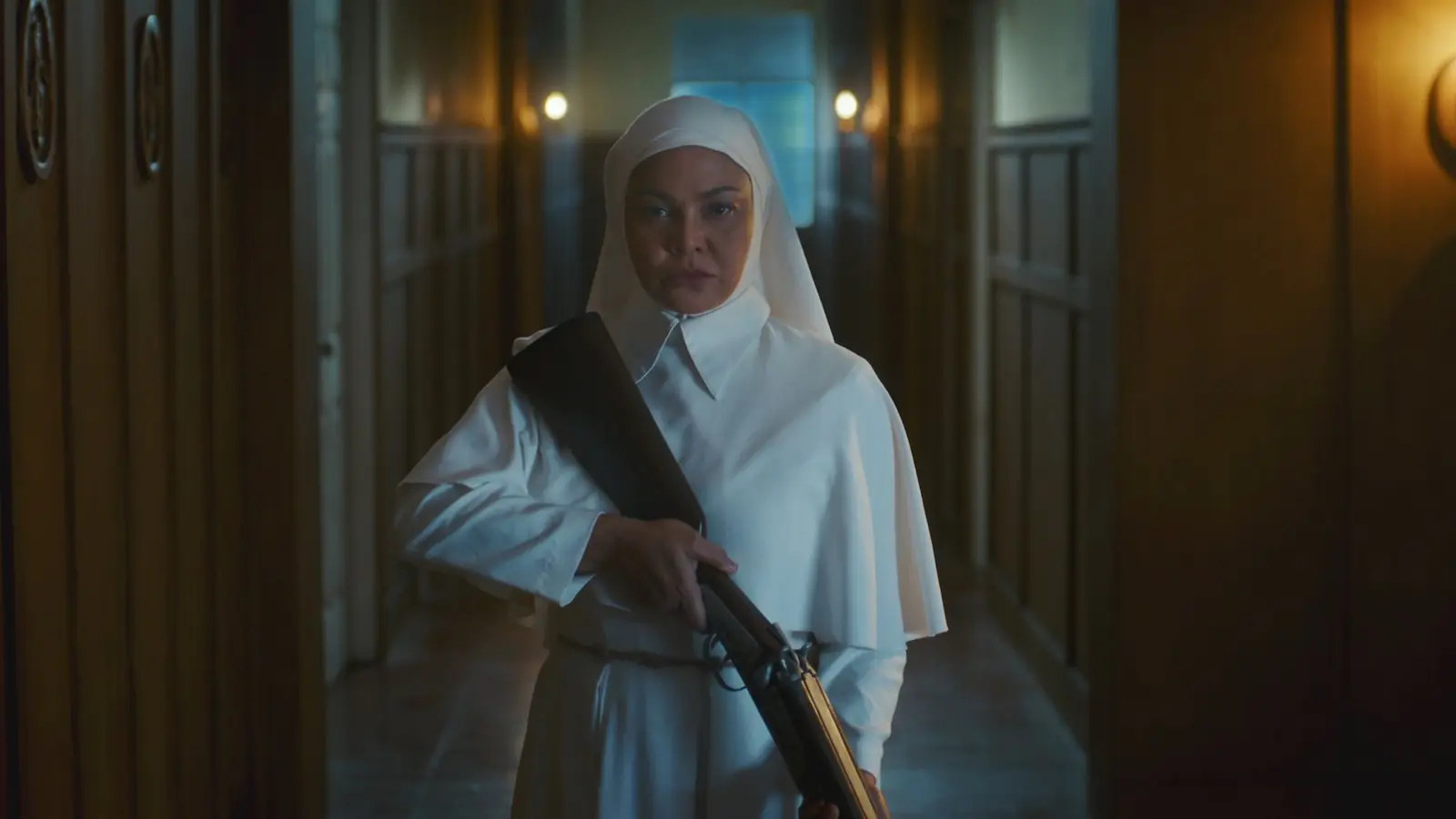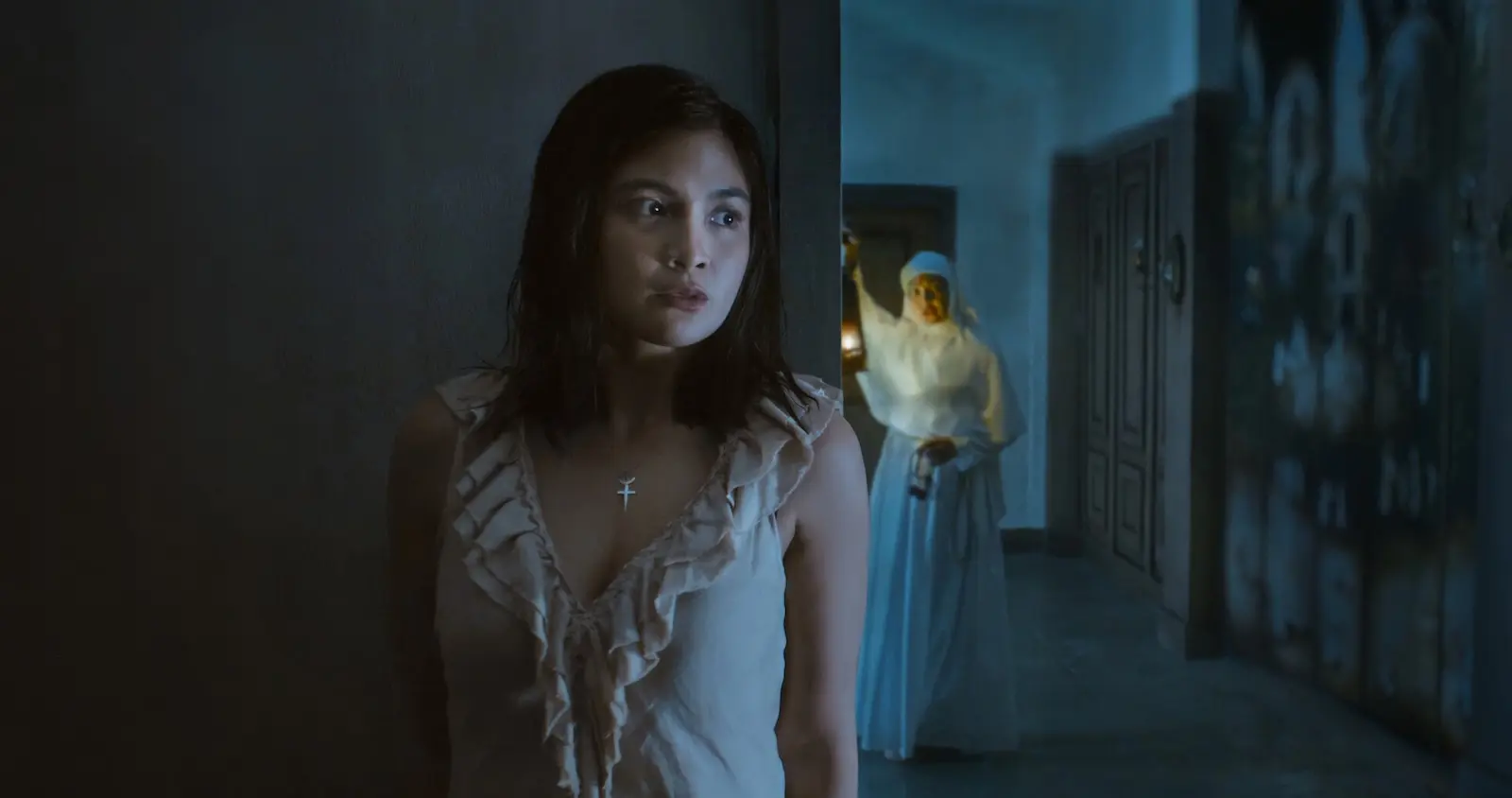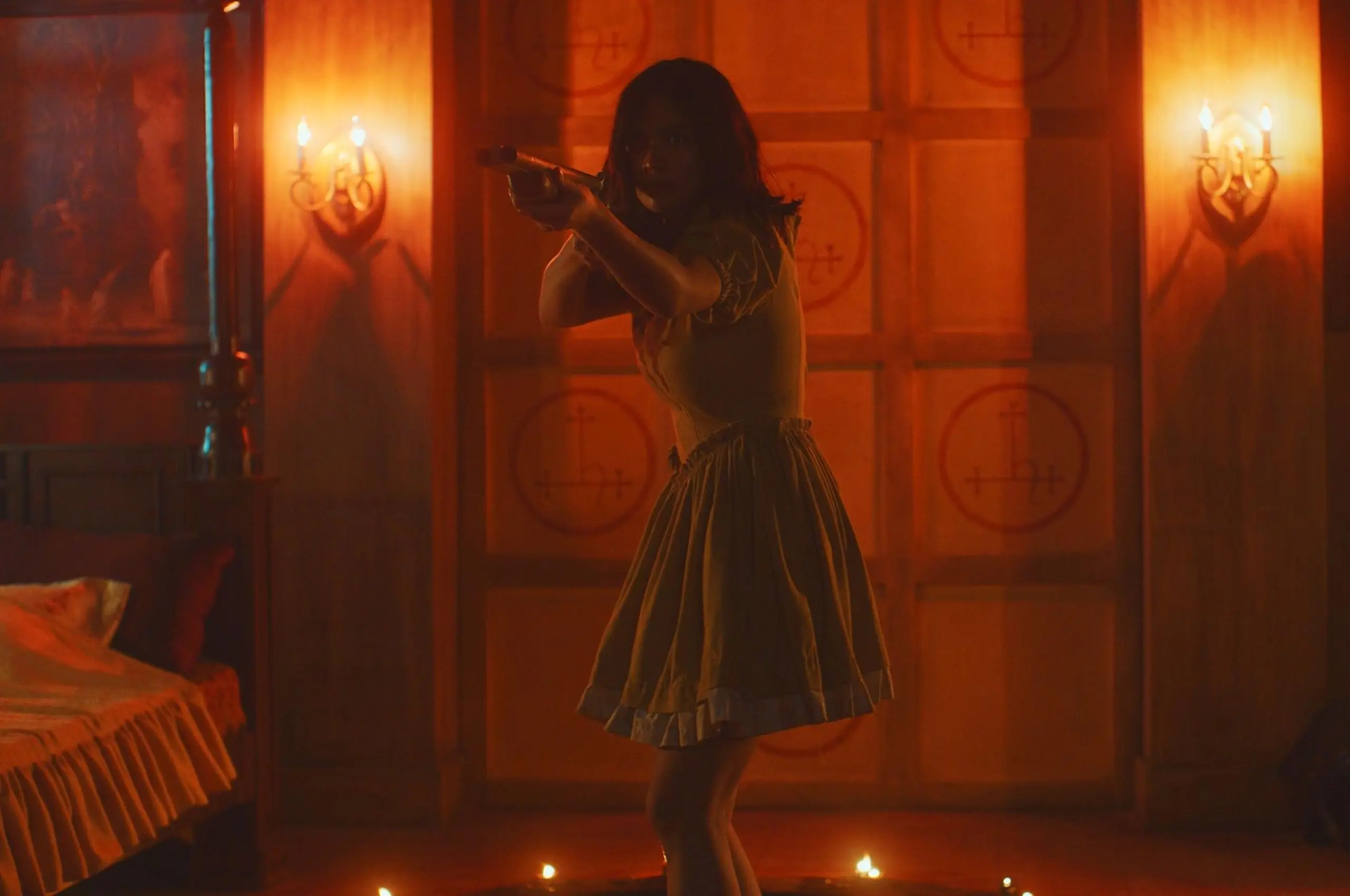Award-winning director Mikhail Red is at his best when he’s writing good horror. His first dip into writing and directing full-length horror features came with Eerie in 2018, which saw him dabbling with ghostly schoolgirls and unreliable nuns. Since then, Red has ventured across genres — from the kidnapping teen drama Dead Kids to the high-grossing techno-thriller Deleter . But with his latest horror film, Lilim, he returns to the atmospheric dread that defined Eerie, while taking bolder, more ambitious swings.
Lilim follows Issa (Heaven Paralejo) and her younger brother Tomas (Skywalker David), both on the run after Issa murders her abusive father. As they flee the police, they find shelter in a convent-run orphanage out in the jungle. But as they try to settle into their new life, it becomes clear that nothing is as it seems, and Sister Marga (Eula Valdez), the head nun running everything, may be hiding more than just secrets.
At first glance, Eerie and Lilim come across as cinematic twins. Both center on a flawed, terrified female lead (Bea Alonzo’s Pat in Eerie, Paralejo’s Issa in Lilim), and unfold within secluded institutions overrun by children and overseen by a convent of nuns.
But the years between Eerie and Lilim have clearly sharpened Red’s craft as a storyteller. While Eerie unfolded primarily within the claustrophobic Sta. Lucia Academy, Lilim hints at a world far larger and more expansive than the walls of the Helping Hands Orphanage. Issa, along with her brother Tomas (Skywalker David), must navigate supernatural threats like demonic angels and secret cults, but they must also grapple with more tangible (and arguably, more terrifying) realities: domestic abuse, murder, and the backdrop of the Philippines at the height of martial law.
Bigger Worlds

This sense of a larger world was definitely by design. In a Rolling Stone Philippines interview, Red cited games like Silent Hill, Diablo, and Fatal Frame — where “the protagonist uncovers a hidden, self-contained mythos” — as key inspirations for Lilim.
That ambition to create an immersive, layered universe is also reflected in the film’s cinematography, which marks Red’s first-ever collaboration with his father, the Cannes-winning filmmaker Raymond Red. “Medyo perfect fit kasi ‘yong era,” said the younger Red when asked about their experience working together. “Setting is ‘80s at pasok siya doon sa mga ginagawa niyang shorts and experiment films noong ‘80s. ‘Yong feeling ng movie namin, we shot it with old lenses and even ‘yong lighting ratio namin.”
The cinematography of Lilim is certainly what makes it stand out against the rest of Red’s oeuvre. The sickly yellows and dark shades of brown of the orphanage create an almost decaying atmosphere, which contrasts sharply against the stark white of the nuns’ habits, making them visually striking, unsettling, and all the more untrustworthy. Even when the film’s color palette switches into oppressive blues or vivid blood reds, the dark mood remains.

At the center of this world of strange nuns and sinister orphanages is Issa, a traumatized “final girl” who is wrestling with a secret of her own. “In horror, [there’s always] the final girl,” said Red. “Parang mas uphill battle ‘yong struggle. Mas may kailangan sila i-overcome, mas may struggle, mas oppressive kung ano man ‘yong antagonist, villain, or male characters surrounding her.”
Issa embodies Red’s vision of the ideal final girl. There is nothing perfect about her; in fact, the movie opens with her washing the blood of her father off her hands in the kitchen sink. In order to save herself and her brother from their father’s abuse, Issa has turned into a monster, and she grapples with this throughout the entire movie. Tomas repeatedly reminds her that she is now a murderer, radio broadcasts warn that the police are hunting her, and visions of her father’s ghost torment her relentlessly from beyond the grave.
Despite what she has already endured, Issa soon finds herself facing even darker, more terrifying monsters within the walls of the orphanage. She does none of this bravely, her hands shaking as she explores the building’s hidden tunnels and secret doorways. Paralejo brings a vulnerability to her portrayal of Issa, balancing her fear with the strength of an older sister determined to protect her brother. As Red explained, “Para din [for the] audience to feel afraid, kailangan natatakot na ‘yong character mo, ‘di ba?”
But, for all this emphasis on world-building and narrative arcs, Red seems to stumble in Lilim’s final act.
Issa is left with a fate that feels almost futile (and dare I say, cyclical) when you consider how much work she put into breaking free from the monsters in her life, both real and supernatural. Never mind that she was forced to take her father’s life, find a safe place for herself and her brother, and continue protecting him from the horrors of the orphanage. Never mind all of that, because Issa’s story ends with a hollow moral: survival doesn’t always guarantee liberation.
On some level, the ending works when compared to the moral leanings of classic horror movies. As a genre, horror has always been unforgiving towards sinners who transgress against social codes, and Issa is no exception. (Again, she’s a murderer). Happy endings are reserved for the most virtuous. But because Red spent so much time building up Issa’s character, it feels like she deserved better. The time we spend with Issa is disproportionate to the bleakness of her fate, leaving me questioning the purpose behind it all.





